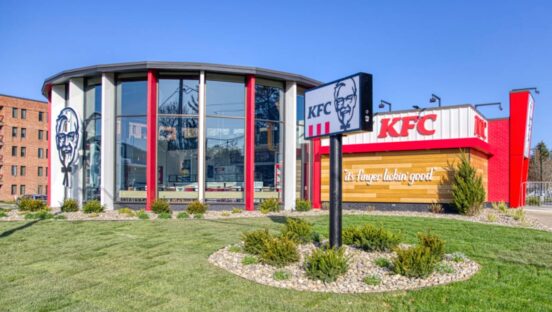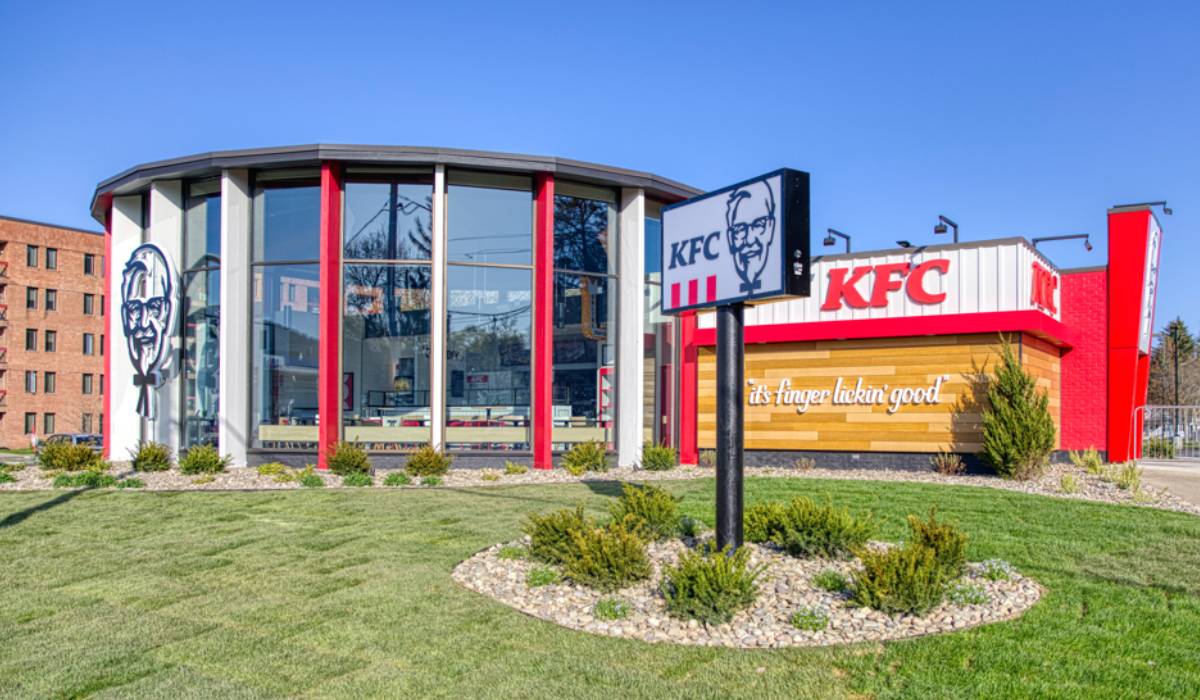Yum! Brands’ development engine continues to run on all cylinders, delivering a record number of new stores for the second year in a row.
The company opened 4,560 gross new units last year, the equivalent of one new restaurant every two hours, beating a previous record it set in 2021 when it opened 4,180 gross new units. That’s more than 8,700 new units in just two years.
“That means one out of every six locations you see around the world was built in the last two years for our brands,” said CEO David Gibbs during Yum!’s Q4 and full-year earnings call. “I think that shows the momentum that we’ve got in the business.”
Factoring in closures, Yum! netted 3,706 new stores last year, the majority of which were in international markets. KFC finished the year with 2,474 gross new builds for a total of 27,760 restaurants, including 3,918 in the U.S. and 23,842 internationally. Taco Bell ended with 8,218 total stores, up from 7,791 at the end of 2021. That includes 7,198 in the U.S. and 1,020 in international markets. Pizza Hut completed 1,584 gross new builds, including 1,367 in international markets, for a total of 19,035 stores worldwide. The Habit Burger Grill has 349 total units, including 338 in the U.S. and 11 outside of the country.
The development engine isn’t likely to slow down in 2023. Yum! entered the new year with record site registration for new units at Taco Bell U.S. Excluding China, Yum! has more than 80 percent of its planned 2023 units at KFC and Taco Bell committed with franchise partners.
The parent company delivered positive sales despite pandemic-related disruptions in China weighing on Q4 and full-year results. Taco Bell’s domestic comps were up 11 percent in the quarter, while KFC grew at 5 percent and Pizza Hut grew by 1 percent.
For the full year, same-store sales were flat at Pizza Hut but up 8 percent at Taco Bell and 4 percent at KFC. The Habit Burger Grill comps declined 1 percent for the quarter and the year. Taco Bell led in terms of core operating profit, up 12 percent year-over-year, with KFC and Pizza Hut up 5 percent and 4 percent, respectively.
Overall, Yum! earned $2 billion in revenue in Q4, up 7 percent from the same period a year ago. Net income increased 12 percent to $371 million. Full-year revenues were $6.8 billion, up 4 percent from $6.6 billion in 2021. Net income fell 16 percent in the year from $1.6 billion to $1.3 billion.
With digital sales reaching $24 billion in 2022, the company is anchoring its development strategy around smaller stores that are more efficient and result in better returns for franchisees, Gibbs said.
“We’ve seen some of our on-premises consumption come back, but really for none of our brands is it back to where we were,” he said during the company’s Q4 earnings call. “That isn’t a bad thing, given the efficiency of operating an off-premises model.”
He touted several initiatives that are bolstering the company’s off-premises business, including Tictuk, a conversational commerce and e-commerce platform acquired by Yum! two years ago. The platform was deployed in more than 3,200 stores across 49 markets last year. An additional 1,000 stores are planned for 2023.
“We processed millions of digital orders in 2022 with Tictuk continuing to prove it can bring in incremental customers and drive digital sales,” Gibbs said. “This is evidenced by the chat ordering launch in KFC Mexico, where more than 90 percent of users who transacted on the chat channel had previously not placed a digital order on other channels.”
Yum! also rolled out a machine learning module that predicts the quantity of product restaurant managers should order at thousands of KFC and Taco Bell stores in the U.S. The technology, combined with strong demand for value items and a 9 percent growth in the breakfast daypart, underscored a strong quarter for Taco Bell. The brand bucked the industry trend on margins, holding company-operated margins flat from last year despite elevated industry-wide cost pressure.
Pizza Hut is benefiting from investments in technology, too. Yum! introduced an AI-driven kitchen and delivery management platform at nearly 500 Pizza Hut U.S. locations last year. It plans to have the technology in more than 7,000 additional stores around the world by the end of 2023. The pizza chain also saw a significant lift in transactions after integrating two major aggregator channels into its point-of-sale system.
“We started the year with about five transactions per store through aggregators,” Gibbs said. “Now we’re up to close to 50 by the end of the year. That’s helping us access some consumers that weren’t using the brand.”
A new look and tone for Pizza Hut’s advertising is connecting well with consumers, and the launch of Melts is attracting younger customers to different occasions, he added.
“We’re really proud of what the team is doing and the success they had in the quarter and the momentum they’re building in the business,” Gibbs said. “I know the franchisees and the team are working incredibly collaboratively, and I do believe they’re getting share gains in the category and attracting new consumers.”










